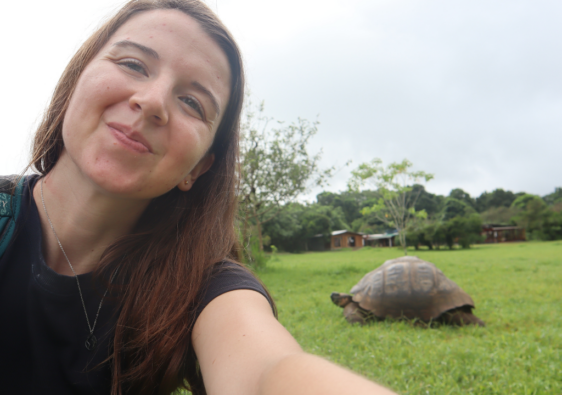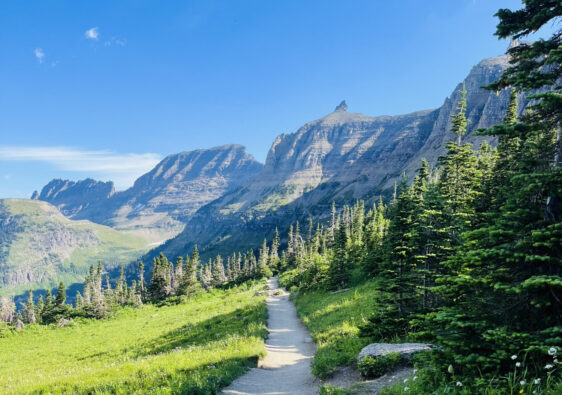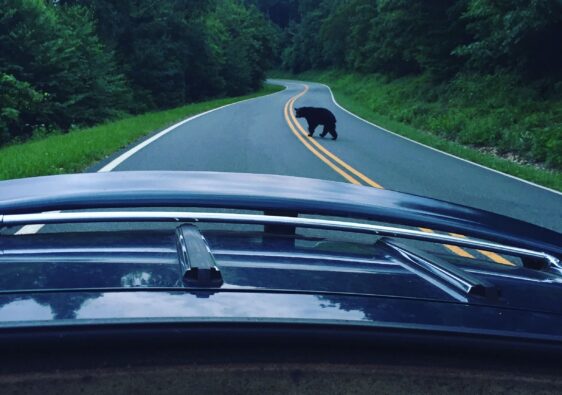Camping at Dry Tortugas is one of the most epic travel experiences I have ever had. Just picture it-you and a small amount of other campers, out on a tiny island in the middle of the Gulf of Mexico. The history is epic, the landscape is stunning, and the amount of adventure to be had is awesome. In this guide I will be going over the full step by step process for camping at Dry Tortugas National Park.
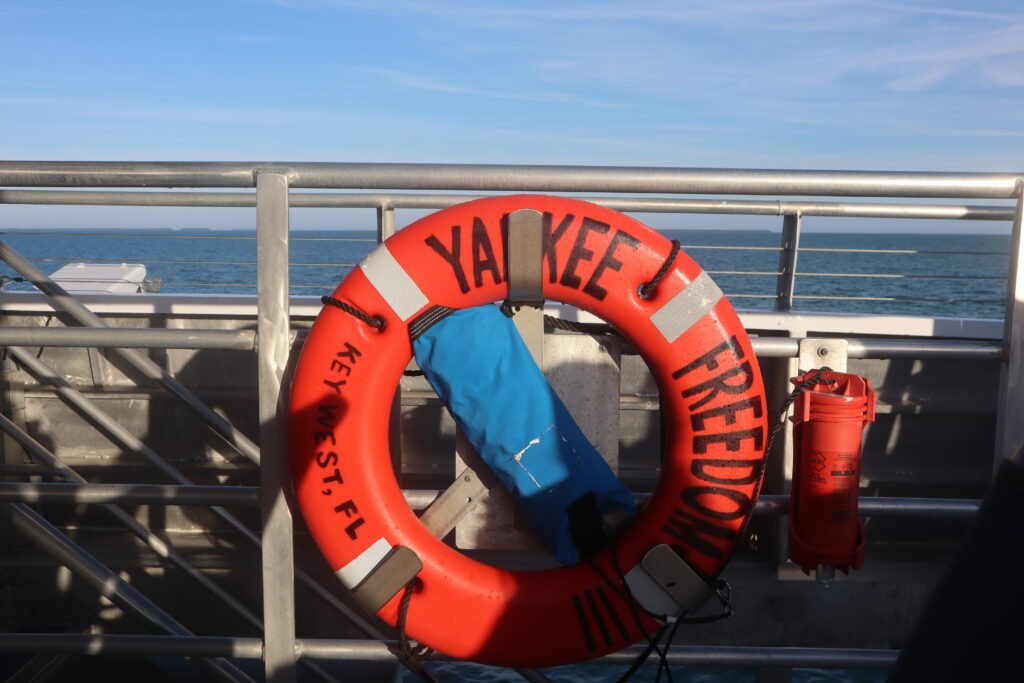
What is Dry Tortugas National Park, and where is it located?
Dry Tortugas is a small island located about 70 miles off the coast of Key West, in the heart of the Gulf of Mexico. It is a collection of 7 islands (11 when it was first discovered-some have returned to the sea). Dry Tortugas, although tiny, was originally a very strategically placed chain of islands for treasure hunting along the coast. The island is extra famous in large part due to the massive Fort Jefferson that sits on Garden Key, the largest island in the archipelago. The national park was established in 1992 and is one of the most challenging parks to visit!
Interested in other Florida national parks? I have a full guide to my top itinerary for the region!
What time of year is best for visiting Dry Tortugas?
This is a very interesting question, because the Dry Tortugas ferry runs 365 days a year. The park is always open, but going in different seasons could drastically affect your experience.
The summer can promise smooth sailing, but it can easily be 100 degrees Fahrenheit at Dry Tortugas. The island offers beautiful beaches but very little shade, so heat sensitive people should be wary of traveling to this park during the summer months.
Fall includes more mild temperatures, but there is always a prominent risk of hurricanes. Hurricane season stretches from June to November, so going to Dry Tortugas during this time is really a gamble. Camping reservations sell out far in advance, so be careful when booking your experience.
Winter is the most popular time to visit the park, but be warned-the sea will be slightly choppier, and the odds of getting seasick on the way out to the island rapidly increase. I am serious-I had no idea how many people get seasick, but it is a real issue that could ruin your trip. I would recommend taking Dramamine and sitting outside on the top deck, or anywhere in the boat with a nice airflow.
Spring would be a lovely time to visit, but the temperatures will still be very hot.
Ok, now onto the step by step for camping!
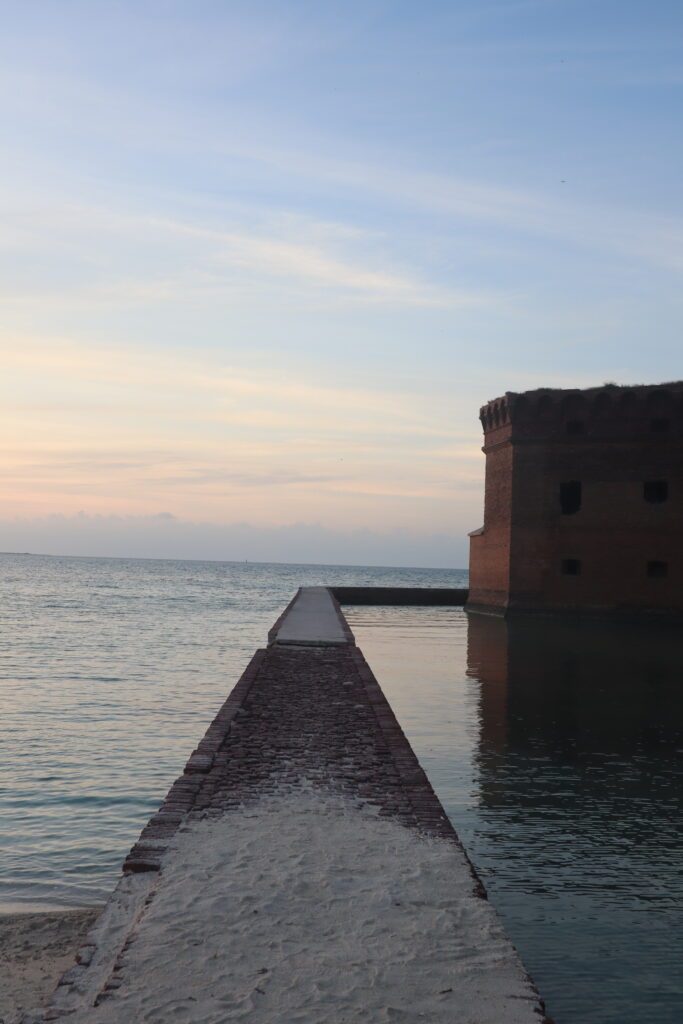
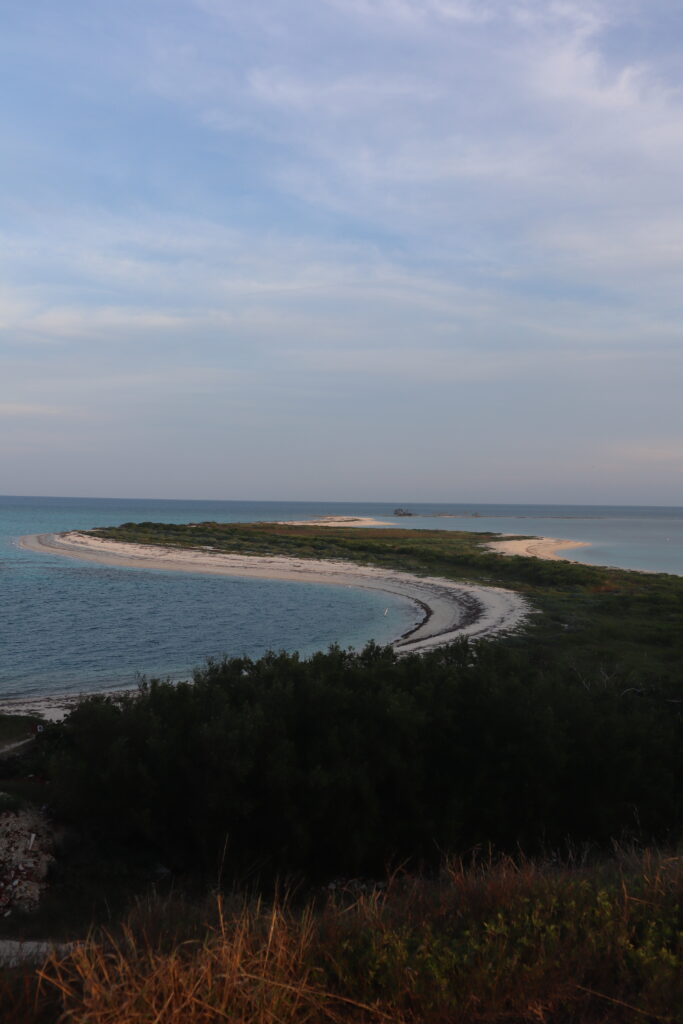
Step 1: Reservations.
There are three ways to get to Dry Tortugas. You can either arrive by private boat, seaplane, or the ferry. If you want to camp, you must either take the ferry or your own boat. There is not enough space on the sea planes to carry camping gear. So, the first (and most popular) option is to take the ferry. Ferry reservations are available here, and camping specific reservations are available here. You must have a camping reservation in order to camp on the island, and these sell out very far in advance.
If you are camping, but using your own boat, there are options for overflow camping. These options area available on a first come, first serve basis.
Step 2: Planning.
Planning for a camping trip at Dry Tortugas can be tricky because you will need a lot of stuff. There is no car camping option, and I would really recommend treating camping there almost like backpacking. Dry Tortugas has a specific list of camping rules, but here are some general tips for packing and planning:
- During the times the ferry is there, you will have access to outlets, plumbing, and a full bar with drinks and food. If you are camping for multiple days, it can be nice to have some specific downtime in the ferry/availability of their resources.
- The campgrounds are minimal, and provide a picnic table, a grill, and a pole to hang towels/food. Some campsites have shaded spots, but shade is not guaranteed.
- There is a limit to how much you can pack-each person can bring one backpack, one bin, and one cooler. There are wheelbarrows all around to carry your things to and from the ferry.
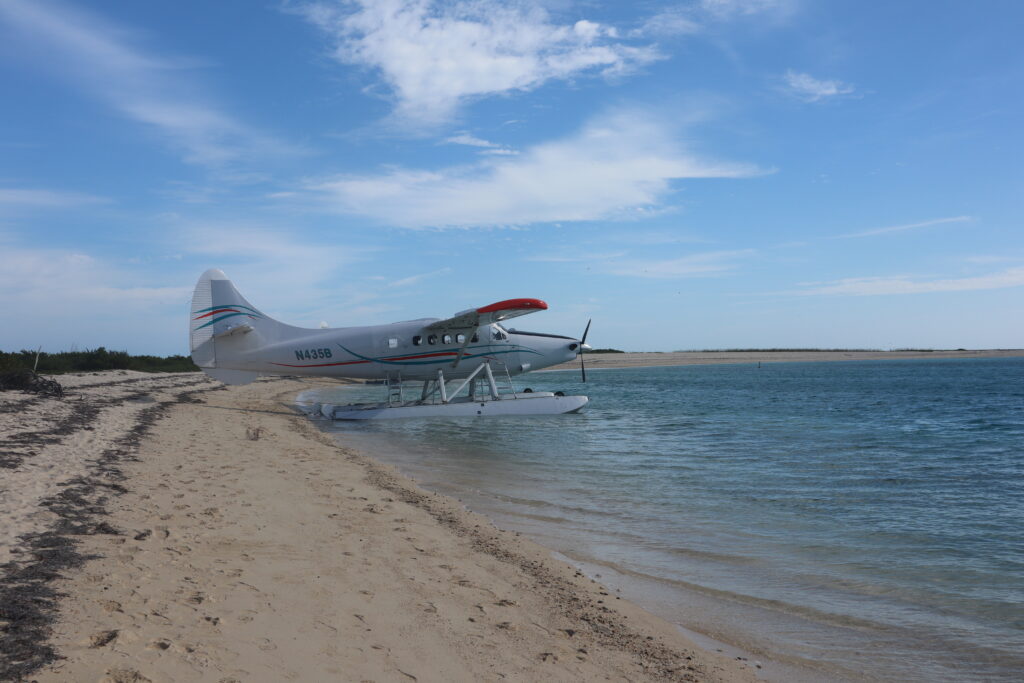
Step 3: Being on the island.
When you first step on land at Dry Tortugas, you will go pick a campsite and set up camp. There are a limited number of campsites, and none of them are especially private. If they are available, I would recommend one closer to the fort, because those spots served us well!
Note: If you arrive on the ferry, there will be a guided tour of the fort shortly after the ferry arrives. You will most likely miss the tour, but just do it another day! Set up camp when you arrive.
The campsites are pretty basic, and there are compostable toilets for camper use only. There is no electricity.
The island will most likely feel very small while the ferry is there, but once the ferry leaves the place becomes very quiet. Despite being such a small island, there is actually quite a bit to do. Here are some activities I recommend:
- Explore Fort Jefferson, either on your own or on the tour. Fort Jefferson is honestly really sweet, and you could spend hours wandering around. This is an especially cool activity if you are camping, because you can explore the fort after the crowds leave. It becomes quite spooky closer to sunset.
- Snorkel. The reef around the island is excellent for snorkeling and spotting wildlife, but a lot of the fish are scared off during the times the ferry is there. That makes for excellent snorkeling after the ferry leaves. The most common snorkeling route is following the moat around, as the moat acts like an artificial reef.
- Walk to the edge of the island. The island of Garden Key is tiny, but it can be pretty fun to walk from Fort Jefferson to the very edge of the area. You will see many beautiful sea shells, but remember that this is a national park! Try to not take what you do not need.
- Stargaze. The stars out at Dry Tortugas are seriously insane. I mean, this is an island in the middle of the Gulf of Mexico-how could it not be cool? Download an app or bring a guidebook to help you keep track of all the spectacular constellations you will see.
Step 4: Camping.
I do not have too many notes about the actual sleeping on the island. I slept like a baby, and there were no incidents. One thing to keep in mind is that while your campsite will be on sand, it will still be helpful and more comfortable to have some sort of sleeping pad.
There are also a lot of hermit crabs on the island, and I was worried they would interfere with my sleep. There were no issues! They did not bother us, and even though some of the crabs were massive, they kept to themselves.

Step 5: Leaving.
You can stay on the island for up to four nights, but you will eventually have to leave. Be sure to pack out everything you took in, and leave your campsite clean and orderly. If you are taking the ferry back, you will need to have your campsite packed up by 10 am (even though the ferry will not head back until 3).
With your remaining couple hours in the park, I highly recommend using this time to take the guided tour of Fort Jefferson if you have not yet, and use the remaining time to relax and chill at the beach. You can also go snorkeling again!
One final note: The ferry ride can get quite rocky, so please take some sort of anti-nausea before you head out if you are prone to seasickness!
Dry Tortugas was one of the most epic national park adventures I have experienced, and I wish you happy exploring!

